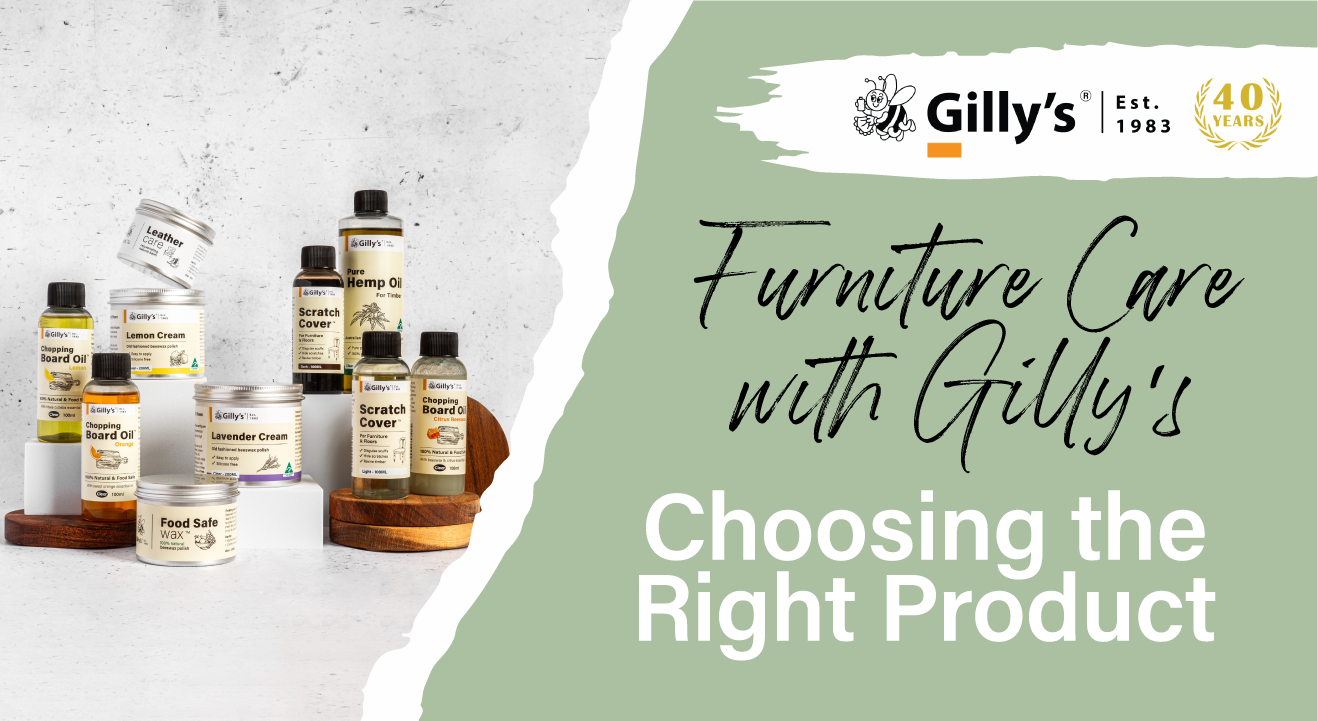
How do I decide which product to use?
It can be very confusing, trying to work out which product is most appropriate for your timber project. In this blog, we aim to guide you in the right direction.
The truth is that many of our products are very versatile, each with their own unique benefits, so there isn't a hard and fast rule on which product to use and when. However, the general rule of thumb when finishing timber is that there are generally three stages of sealing, when starting from scratch with raw wood.
For the purpose of this blog, we will consider that the starting point is raw timber, either freshly stripped or brand new.
Before you start, if there are any gaps or chips in the timber that are larger than 1mm deep or wide, consider filling them with our ever-popular Beeswax Filler Sticks. Available in six colours; all of which can be blended with each-other to create your own match. Made from our beautiful Western Australian beeswax.
1. FEED - Required
The first stage, is always to feed the dry fibres of the wood to prevent cracking. This is achieved by applying an oil or a very soft wax. There is little or no sheen imparted for this stage as the aim is for the product to penetrate deeply.
You may decide to stop after stage one and that's fine. All of our products are stand-alone. However, we do recommend waxing over the oil for extra protection from scuffs and scratches.
Which products are suitable for this?
Standard
Restoring Polish (soft wax, indoor use), Floor Polish (soft wax/indoor use), Alfresco Timber Oil (indoor/outdoor use, slow dry/cure)
Natural and Food Safe
Liquid Beeswax (slightly richer feed), Orange Oil, Lemon Oil, Chopping Board Oils - easy and quick for use in the kitchen (all quick dry/indoor use).
Pure Tung Oil (slow dry/cure, very durable, indoor/outdoor use) - multi-purpose, needs to be diluted with a solvent - great for those who like to make their own finishes.
Pure Tung Oil with Citrus Thin (slow dry/cure, very durable, indoor/outdoor use) - easy all in one seal for busy people.
Kitchen Bench Oil (slow dry/cure, very durable, indoor use) - easy all in one seal for busy people.
Hemp Oil (moderate dry/cure, durable) - indoor use. Versatile with no added solvent. Great for people with very sensitive noses.
2. BUILD – Optional, depending on circumstances
The second stage, is to build a protective sheen to prevent scuffs and scratches. This is usually achieved with a firmer wax. It also helps to seal in the feed of the oil or soft wax that was applied previously, along with filling very fine cracks and crevices.
If the timber is super smooth with no gaps to fill, you can just go on to the third stage. You can also just stop here if you are happy with the result.
Which products are suitable for this?
Cabinet Makers Wax (firm wax, indoor use)
3. FINISH – Optional though recommended; depending on circumstances
The third is to finish the entire process with a very fine and smooth creamy wax, which can be buffed to a high sheen. This serves an aesthetic and a practical purpose. The wax once dry, forms more mechanical protection. This stage can be considered as the maintenance layer, which you can apply every 3 - 6 months depending on the wear of the surface.
Which products are suitable for this?
Standard
Carnauba Polish (highest sheen/indoor use), Cream Polish (high sheen/indoor use)
Natural and Food Safe
Food Safe Wax (moderate sheen/indoor use)
This is a basic overview of the steps we recommend. We do have some specialty waxes (Lime Wax and Black Wax, which are often used in conjunction with our Mezzie and Frank Chalk Effects Furniture Paint). You may like to read a blog featuring our Lime Wax here.
Below is a reference chart, which is useful to understand the features and properties of our products.










